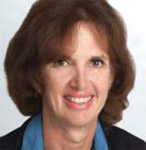Small Pharma And Large CROs: Considerations For Partnering

By Ed Miseta, Chief Editor, Clinical Leader
When it comes to selecting a CRO, pharma companies have a lot of decisions to make. Do you go with a CRO that has experience and expertise in your study? How should you rank their proficiency in critical areas such as regulatory, quality, and timeliness? Do you go with a CRO you have familiarity with or try something new?
 All are noteworthy considerations, but if you’re a small pharma or biotech company, you have an additional decision to make: what size CRO do you go with?
All are noteworthy considerations, but if you’re a small pharma or biotech company, you have an additional decision to make: what size CRO do you go with?
Linda Strause, Ph.D., principal and founder of Strategic Clinical Consultants, has helped many small firms navigate through this decision. A large CRO can bring a lot to the table for a small pharma company. They generally have a number of silos dedicated to every component of a clinical trial, including study start-up, clinical operations, risk-based monitoring, statistics, data management, and proposals. Unfortunately dealing with a large CRO can also have some drawbacks. One of the first drawbacks is getting them to understand the mindset and capabilities of a small company.
“I recently had the opportunity to deal with a large CRO,” says Strause. “We had an introductory phone call to get to know each other. The folks with the CRO all introduced themselves. When it was my turn to present my small company, I went around the table, introducing the CEO, a couple of vice presidents, and myself. At that point someone from the CRO asked if they would have the opportunity to meet the operations group at a later date. He didn’t understand that this was it. Everyone on our team was already on the phone.”
That incident upset Strause, eventually resulting in her bringing it to the attention of senior management at the CRO. What was clear to her was that larger CROs needed to do their homework better prior to sitting down for a kick-off meeting.
“When dealing with a virtual company, you need to know something about them going in,” she notes. “There are a lot of things those companies don’t do. Throughout that meeting, we were asked a lot of questions about things that did not specifically apply to our protocol. We received budget spreadsheets that included Asia, Europe, and other places around the world, when the company was doing a small study in North America. If someone is going to take time from several executives to hold a meeting, they should first determine if it is even necessary. If they had done their homework and understood the company, a lot of time could have been saved. Presentations should always be personalized for the company sitting at the table.”
Strause notes finances are also very important to her. Small virtual firms do not have the budgets of many larger companies. When working with large CROs she gets tracking of budgeted versus actual costs but projecting expenses into the months ahead would help to manage limited financial resources.
“Some CROs think they can pass along any costs they incur,” she says. “I am the client and I have to pay that bill. I am the one who gets stuck with it. I have a bucket of money with nothing going in but a lot coming out. I have to manage that money very differently than a large pharma or biotech company. It is vital for the large CRO to work with me and help me to make intelligent decisions and projections.”

"In the drug development industry an investigational site may be a top enroller in one study and enroll poorly in another even if they are in the same therapeutic area."
Linda Strause, Ph.D.
Principal and Founder of Strategic Clinical Consultants
WHY GO LARGE?
If going with a large CRO has both benefits and drawbacks, how do you decide if a large CRO is the right fit for your company? Strause notes that discussions usually balance experience with culture.
“Experience and technology are generally the drivers I see at work,” she says. “Technology is always important, and you want to make sure the CRO you select will have the proper technologies in house. I also see companies trying to rely too much on past experience. I don’t necessarily agree that is the best approach, and I think companies can sometimes rely too much on the belief that if a company has done it before, they can do it again. In the drug development industry an investigational site may be a top enroller in one study and enroll poorly in another even if they are in the same therapeutic area. The same is often true of a CRO. There are too many variables that can change the outcome.”
Other parameters that influence decisions include financial stability and reputation of a CRO. A virtual company is very aware of financial instability and requires a fiscally strong CRO as a partner. Strause was forced to manage the impact on a pivotal oncology study when one of the CROs filed bankruptcy. It was very challenging and difficult. The CRO’s reputation may also influence the company’s decision as having a well-known CRO may influence future partnerships or sale of the company.
“I don’t play in the funding space so I don’t know if that is true or not, but my belief has always been that the data is good or it is bad. Neither the CRO nor the sponsor can make a product work. Only the data can tell us,” she states.
RESOURCE ALLOCATION OR BAIT-AND-SWITCH?
One of the most important considerations for a small company working with a large CRO is knowing who will perform the work on your study. Oftentimes a sponsor will be told that one team or individual will do the work, only to have that change as soon as the study is underway. While some sponsors will refer to that situation as bait-and-switch, on this topic Strause comes to the defense of the CROs.
“I don’t think it is bait-and-switch,” she says, “and I do not think it is intentional. When a big CRO first comes in they will naturally bring their A-team. I have certainly been in situations where we get three months into a contract and suddenly I am dealing with a new project manager, but it’s not bait-and-switch. I believe this situation has more to do with resource leveling and allocation. A large CRO deals with numerous clients, large and small, and each wants the best of the best. Everyone wants the A-team working on their project, but even in a large company, that is simply not always possible.”
Strause is currently working with a midsize CRO that she believes is taking a unique approach and making significant effort to meet the needs of the client. The business development person who made the sale continues to have a weekly call with the director of clinical operations. With many of the larger CROs she has worked with, unless she has a complaint, she will never again hear from the business development contact. That type of personal attention can go a long way towards alleviating the unhappiness caused by a change in project manager.
WHAT TO DO WHEN THINGS GO WRONG
No matter how well you vet your CRO, sometimes things will still not go as planned. That will happen with large CROs as well as small. Of course, how you approach the situation will determine your success at getting any situation resolved.
If a study is not going according to plan, Strause recommends going to the business development person or higher. “Rarely do I believe these situations to be the fault of the project manager,” she says. “At the same time, the person who will benefit the most from the client being happy is that BD person. Unfortunately, what will normally happen is the project manager will simply be moved to another study. That is just the way things work in this world.”
There was only one time when Strause came close to removing a large CRO in mid-study. This was early on in the project, but she believes if you’re going to make a move, it’s better to do it sooner rather than later. She recommends doing it only if you truly feel you have nowhere left to turn. Still, knowing when to pull the plug is a difficult challenge.
“That’s the most difficult question to answer,” she says. “To start, I think people have to be able to admit they made a mistake. That is difficult in and of itself. It was the hardest thing I ever had to do and I dreaded having to make that decision. I am all about metrics. If I see we are behind on the timeline and things are not being done correctly, I will go to the highest level executives I can reach. I would even go so far as to request bi-weekly calls with the clinical project manager and their line manager and that person’s line manager. I feel you need to go up at least three levels to get to the directors and VPs of clinical operations. They will do everything in their power to make you happy, but if things are still not going as they should, you need to cut them loose. Sometimes companies are just not a match for each other.”
